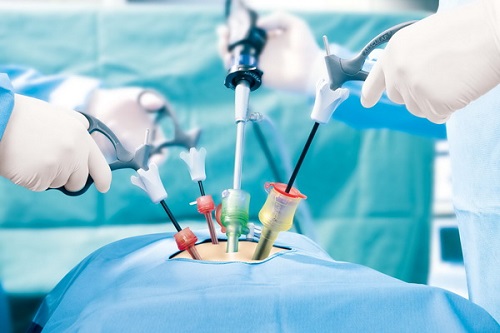
Meet Our Doctor
Dr. Rita Bang
Laparoscopic Surgeon In Nagpur

Laparoscopic Surgeon In Nagpur
Laparoscopic surgery is a minimally invasive surgical technique used in the abdominal and pelvic areas. It uses the aid of a laparoscope — a thin, telescopic rod with a camera at the end — to see inside your body without opening it all the way up. Instead of the 6- to 12-inch cut necessary for open abdominal surgery, laparoscopic surgery uses two to four small incisions of half an inch or less.
A laparoscopy allows your doctor to see inside your body in real time, without having to make large incisions. Your doctor can also obtain biopsy samples during this procedure, as well as also perform surgery.
When an abdominal laparoscopy is performed, a doctor uses an instrument called a laparoscope to look at the abdominal organs. A laparoscope is a long, thin tube with a high intensity light and a high resolution camera at the front. The instrument is inserted through an incision in the abdominal wall. As it moves along, the camera sends images to a video monitor.
Procedure
Laparoscopy is almost always performed under general anesthesia. This means you’ll be unconscious for the procedure. However, you may still be able to go home the same day.
Once you’re asleep, a small tube called a catheter will be inserted to collect your urine. A small needle will be used to fill your abdomen with carbon dioxide gas. The gas keeps the abdominal wall away from your organs, which reduces the risk of injury.
Your surgeon will make a small cut in your navel and insert the laparoscope, which transmits images to a screen. This gives your doctor a clear view of your organs.
What happens next depends on the type of procedure. For diagnosis, your doctor might take a look and then be done. If you need surgery, other incisions will be made. Instruments will be inserted through these holes. Then, surgery is performed using the laparoscope as a guide.
Once the procedure is over, all instruments are removed. Incisions are closed with stitches, and then you’re bandaged and sent to recovery.
What are the advantages of this procedure?
- Less trauma to the abdominal wall.
- Less blood loss.
- Reduced risk of hemorrhage.
- Smaller scars.
- Reduced risk of wound infection.
- Shorter hospital stay.
- Less time in the hospital means less expense.
- Faster recovery time and return to activities.
- Less wound pain during healing.
- Less pain medication necessary.
What are the risks of an abdominal laparoscopy?
The most common risks associated with a laparoscopy are bleeding, infection, and damage to organs in your abdomen. However, these are rare occurrences.
After your procedure, it’s important to watch for any symptoms of infection. Contact your doctor if you experience:
- fevers or chills
- abdominal pain that becomes more intense over time
- redness or discoloration, swelling, bleeding, or drainage at the incision sites
- continuous nausea or vomiting
- persistent cough
- shortness of breath
- inability to urinate
- light-headedness
